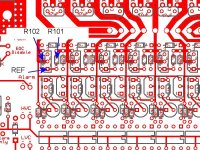Spent over an hour scrubbing and trying to deflux the opto couplers. They look visibly clear of flux. Hooked the first 16 cells up, with main pack connections, just to test (2nd half of pack not connected via tap wires) and thought I had fixed it cause the LED's didn't turn on and the main LED was red for once, not yellow/orange.
Put everything back together, hooked the tap wires up, then hooked the main power wires up and uttered several profanities cause the same LED's were back on.
I have the BMS tap wires split into two different plugs. When I have the main pack wires connected, and the bottom half of the tap wires, the LED's are off, but when I connect the top half they turn on.






